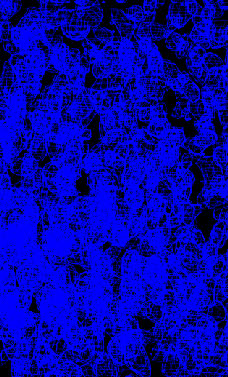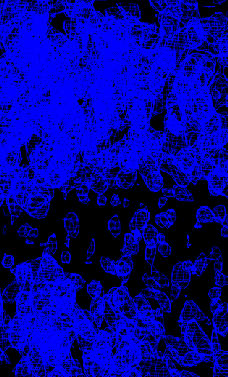

sites as found (incorrect)
inverted sites (correct)
The enantiomorph ambiguity can be resolved by MAD phasing with the original heavy atom configuration and its inverse image, followed by inspection of the resulting electron density maps. Only the correct enantiomorph will produce an interpretable map.
The electron density maps are computed with the observed structure factors measured at a remote wavelength, and MAD phases. The input files are derived from the fourier_map.inp task file in the inputs directory.
cns_solve < fourier_map_elec.inp > fourier_map_elec.out [18 seconds]
cns_solve < fourier_map_elec_flip.inp > fourier_map_elec_flip.out [18 seconds]
The two resulting map files are:
fourier_map_elec.map fourier_map_elec_flip.map
If you have mapman installed, you can use the command
map_to_omap *.map
to convert the CNS maps to a format which can be read into O.
In O, enter @omac to read in the maps. Use the
Objects menu to turn the maps on and off individually.
 |
 |
|
Experimental MAD phased map, sites as found (incorrect) |
Experimental MAD phased map, inverted sites (correct) |
Sometimes, for example if there are problems with the quality of the data or only a small subset of the heavy atom sites is known, neither of the two electron density maps shows a clear contrast between protein regions and solvent regions. In such a case, density modification should be performed and the new electron density maps inspected.